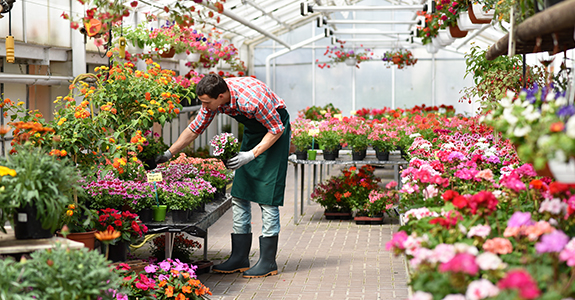Help protect your horticultural business with risk-relevant insurance coverage

As a horticultural business owner, you face unique risks that can disrupt your operations.
That's why it's crucial to have insurance coverage that addresses those risks and other horticultural safety hazards. Not only can a customized insurance plan help you mitigate losses, but risk-relevant coverages can help you avoid business interruptions and paying for insurance options that aren’t relevant to your operations.
Top 6 risks facing horticultural businesses
Every horticultural business faces different exposures—but understanding where your risks lie is the first step to protecting your operation. That’s why we’ve identified six key risk areas commonly impacting horticultural businesses. Each area is paired with insurance coverages designed to help reduce potential losses.

How a risk-relevant insurance approach can help protect your horticultural business
When developing your insurance plan, conduct a comprehensive risk assessment of your business. Identify potential threats and evaluate their likelihood and impact.
Once you have coverage in place that corresponds to those risks, regularly review and update your coverage as your business evolves and risks change.
By adopting an insurance approach geared toward horticulture risks, you can significantly enhance the long-term sustainability of your business.
Why choose us for horticultural insurance?
We’ve exclusively served the horticultural and floral industries for more than 135 years. That includes garden centers, plant nurseries, greenhouse growers, florists, and landscapers.
We have the experience and knowledge to assess the risks businesses like yours face, and offer custom insurance solutions tailored to your operations.
If you'd like to review your business policy with a qualified insurance agent, contact us. We’re here to help you and your business.

Most common injuries for garden center workers—and how to avoid them

Make safety a top priority at your garden center

Protecting your greenhouse in higher-risk areas: 6 risk management strategies
The information in this article is for informational or entertainment purposes only. View our disclaimer by going to terms and conditions and clicking on Learning Center disclaimer in the table of contents.











